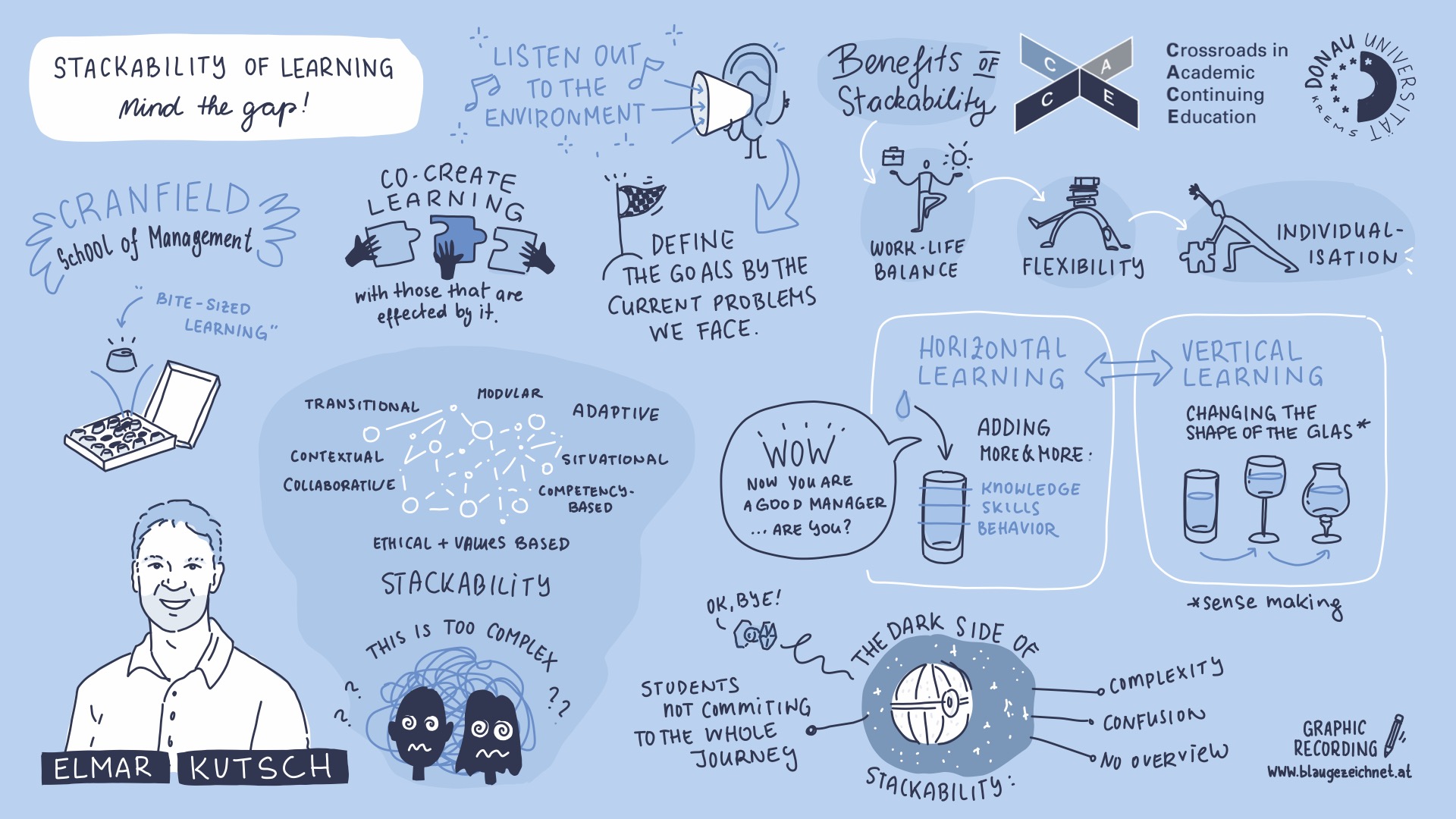
How can learning be made flexible and enable learners to put together their own programs? At the fourth CACE („Crossroads in Academic Continuing Education“) event, Elmar Kutsch spoke about stackability of learning content, which means the modular assembly or combination of learning content or, for example, continuing education programs. Kutsch is Associate Professor of Risk Management at the Cranfield School of Management. At his university, intensive thought was given to how stackability could best be implemented in online learning.
Kutsch began by defining different types of stackability. The one that is probably most common at universities is the so-called „vertical“ stackability. Here, different units build on each other and ultimately lead to a degree or certificate. „Horizontal“ stackability, where it is possible to combine learning units from different fields, is just as common. Finally, there is „diagonal“ stackability, which combines elements of vertical and horizontal stackability. It enables students to complete a major subject while integrating skills from other disciplines into their studies.
Other forms of stackability have also been considered, says Kutsch. For example, “modular” stackability, which should enable learners to put together their own program from smaller units. Another option is “skills-based” stackability, which focuses on skills such as critical thinking, communication or leadership. “Transitional” stackability is aimed at people who want to move between different career stages or sectors. ”Adaptive” stackability is intended to enable content to be adapted to current developments – „timeless knowledge is combined with current knowledge“, such as knowledge about artificial intelligence. With “collaborative” stackability, learning outcomes can also be achieved by working together with others. There are several other forms in addition to those mentioned.
Implementing this variety of forms of modulability has proven to be complicated, including administratively. „No matter how much it can improve learning, it can be off-putting because it is perceived as too complex,“ said Kutsch. So his university ultimately opted for vertical stackability.
Kutsch also asked the CACE participants what they thought of stackability. „Flexibility“ was mentioned most frequently as an advantage, as well as individualization, adaptability and the possibility of new learning paths. The participants identified the great need for student support, the lack of clearly defined learning paths and a feeling of being overwhelmed as disadvantages. It became clear that stackability is a long-term trend for the participants. The question is how much stackability should be offered and which model should be focused on, summarized Kutsch. In any case, the aim must be to improve the learning experience.
About Elmar Kutsch

“To be uncertain is uncomfortable, but to be certain is ridiculous.” (Chinese Proverb) For Elmar, the discomfort associated with uncertainty serves as both a challenge and a catalyst for opportunity. As an avid skydiver, his personal and professional pursuits centre on navigating the unexpected. Elmar's initial immersion into the enigmatic realm of uncertainty dates back to 1998, during his tenure in various senior roles within Germany's IT sector. Tasked with the successful execution of large-scale projects, including pivotal roll-out and outsourcing strategies, he liaised with noteworthy clients like Commerzbank, Deutsche Börse, and the Polizei Rheinland Pfalz. This enduring fascination with risk and the unpredictable steered him toward academia. Initially a Lecturer in Operations Management at the University of Surrey, Elmar has been affiliated with Cranfield since 2007, continually exploring the intricacies of managing uncertainty.